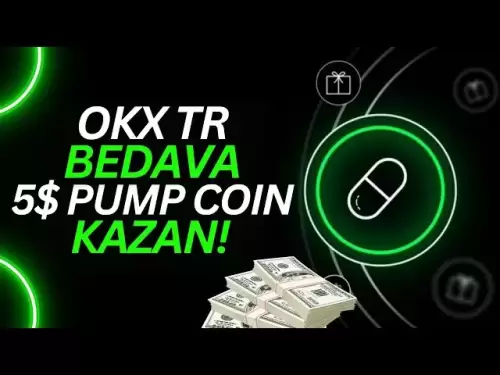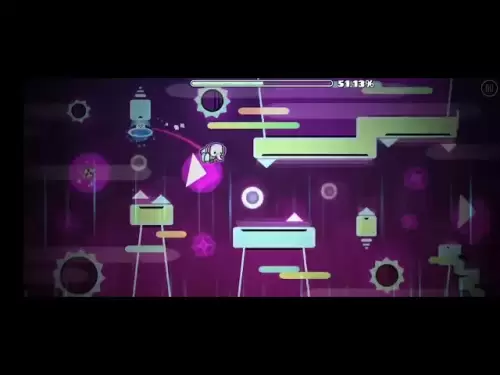-
 Bitcoin
Bitcoin $117400
-0.46% -
 Ethereum
Ethereum $3768
0.60% -
 XRP
XRP $3.551
2.09% -
 Tether USDt
Tether USDt $1.000
0.00% -
 Solana
Solana $203.2
11.30% -
 BNB
BNB $770.9
1.92% -
 USDC
USDC $0.9999
0.01% -
 Dogecoin
Dogecoin $0.2709
-0.02% -
 Cardano
Cardano $0.9024
4.49% -
 TRON
TRON $0.3139
0.60% -
 Hyperliquid
Hyperliquid $45.60
-1.41% -
 Stellar
Stellar $0.4730
-1.34% -
 Sui
Sui $4.025
2.15% -
 Chainlink
Chainlink $19.79
2.19% -
 Hedera
Hedera $0.2724
-2.39% -
 Avalanche
Avalanche $25.93
3.05% -
 Bitcoin Cash
Bitcoin Cash $524.0
-1.83% -
 Shiba Inu
Shiba Inu $0.00001558
0.50% -
 Litecoin
Litecoin $116.7
-0.30% -
 UNUS SED LEO
UNUS SED LEO $8.996
0.00% -
 Toncoin
Toncoin $3.334
1.83% -
 Polkadot
Polkadot $4.506
0.34% -
 Uniswap
Uniswap $10.99
4.83% -
 Ethena USDe
Ethena USDe $1.001
0.03% -
 Pepe
Pepe $0.00001461
3.17% -
 Monero
Monero $320.3
-1.01% -
 Bitget Token
Bitget Token $4.935
0.36% -
 Dai
Dai $0.9998
0.00% -
 Aave
Aave $322.4
-1.25% -
 Bittensor
Bittensor $455.6
9.33%
What is Web3 and its connection to blockchain?
Web3 empowers users with decentralized control over their data, identities, and digital assets through blockchain technology and smart contracts.
Jul 21, 2025 at 08:14 am
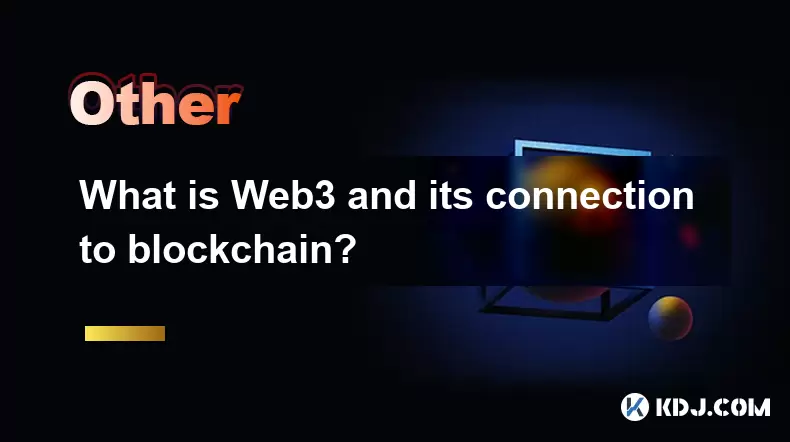
Understanding the Concept of Web3
Web3, often referred to as Web 3.0, represents the next evolution of the internet. Unlike its predecessors, Web1 (static web) and Web2 (interactive web), Web3 emphasizes decentralization, user ownership, and data transparency. At its core, Web3 aims to give users control over their digital identity, assets, and data without relying on centralized intermediaries like Google, Facebook, or banks.
The foundation of Web3 lies in blockchain technology, which enables peer-to-peer interactions and trustless systems. In a Web3 environment, users interact with decentralized applications (dApps) that run on blockchain networks, ensuring that no single entity has full control over the data or services.
How Blockchain Powers Web3
Blockchain is the backbone of Web3. It provides the infrastructure needed to support decentralized systems. Through distributed ledger technology, blockchain ensures that data is stored across a network of nodes, making it resistant to censorship, tampering, and single points of failure.
Smart contracts, which are self-executing contracts with the terms directly written into code, play a crucial role in Web3. These contracts automatically execute actions when certain conditions are met, enabling trustless transactions and automated processes without the need for intermediaries.
For example, in a Web3-based social media platform, users can own their data and even earn tokens for contributing content or moderating the platform. This contrasts sharply with traditional platforms where companies monetize user data without sharing the profits.
Key Components of Web3 Ecosystem
- Decentralized Identifiers (DIDs): Users can create and manage their own digital identities without relying on centralized authorities. This allows for secure and private authentication across platforms.
- Decentralized Storage: Platforms like IPFS (InterPlanetary File System) and Filecoin provide peer-to-peer storage solutions, ensuring that data is not stored on a single server but across a distributed network.
- Token Standards: Protocols like ERC-20 and ERC-721 on Ethereum define how fungible and non-fungible tokens (NFTs) are created and managed. These tokens represent digital assets that users can own and transfer freely.
- Decentralized Finance (DeFi): Web3 enables financial services like lending, borrowing, and trading without traditional banks, using blockchain-based protocols that are open and permissionless.
Each of these components works together to build a transparent, secure, and user-centric internet.
Real-World Applications of Web3 and Blockchain
Web3 is already being implemented across various industries:
- NFT Marketplaces: Platforms like OpenSea and Rarible allow artists and creators to mint and sell digital assets using blockchain, ensuring authenticity and provenance.
- Decentralized Autonomous Organizations (DAOs): These are community-driven organizations governed by smart contracts. Members vote on decisions using governance tokens, eliminating centralized leadership.
- Supply Chain Management: Blockchain is used to track products from origin to consumer, increasing transparency and accountability in industries like agriculture and manufacturing.
- Identity Verification: Web3 allows individuals to prove their identity without sharing sensitive information, using cryptographic proofs and decentralized identifiers.
These applications demonstrate how blockchain enables Web3's vision of a more open and equitable digital world.
Challenges and Limitations in Web3 Adoption
Despite its potential, Web3 faces several challenges:
- Scalability Issues: Many blockchain networks struggle with slow transaction speeds and high fees, especially during peak usage. Solutions like Layer 2 scaling and sharding are being developed to address this.
- User Experience Barriers: Interacting with Web3 often requires wallets, private keys, and complex interfaces, which can be daunting for non-technical users.
- Regulatory Uncertainty: Governments are still figuring out how to regulate decentralized platforms, which creates uncertainty for developers and investors.
- Security Risks: While blockchain is inherently secure, smart contract vulnerabilities and phishing attacks can lead to loss of funds or data.
Overcoming these challenges requires collaboration between developers, regulators, and users to build a more accessible and secure Web3 ecosystem.
Frequently Asked Questions
What is the difference between Web2 and Web3?
Web2 relies on centralized platforms where companies control user data and content. Web3 shifts power to users by enabling decentralized platforms where users own their data and interact through blockchain-based systems.
Do I need cryptocurrency to use Web3?
Yes, most Web3 applications require some form of cryptocurrency or token to perform actions like paying transaction fees, purchasing NFTs, or participating in governance.
How do I start using Web3?
You can begin by setting up a blockchain wallet like MetaMask, acquiring some Ethereum or another native token, and exploring dApps on platforms like Ethereum, Binance Smart Chain, or Solana.
Is Web3 only about blockchain?
While blockchain is central to Web3, other technologies like decentralized storage, edge computing, and AI also contribute to building a more intelligent, decentralized internet.
Disclaimer:info@kdj.com
The information provided is not trading advice. kdj.com does not assume any responsibility for any investments made based on the information provided in this article. Cryptocurrencies are highly volatile and it is highly recommended that you invest with caution after thorough research!
If you believe that the content used on this website infringes your copyright, please contact us immediately (info@kdj.com) and we will delete it promptly.
- BlockchainFX, PEPE, and USDT: What's the Buzz in the Crypto Jungle?
- 2025-07-22 18:50:12
- Ripple's RLUSD: Institutional Backing Fuels Stablecoin Ascent
- 2025-07-22 18:30:12
- Dogecoin, AI Coins, and the Future of Crypto: What's the Hype?
- 2025-07-22 18:30:12
- Weak Passwords, Hackers, and Company Breaches: A Tech Expert's Wake-Up Call
- 2025-07-22 18:50:12
- Jito Labs' BAM on Solana: A New Era for DeFi or Just Hype?
- 2025-07-22 18:55:13
- PENGU Memecoin's Daily Surge: Riding the Pudgy Penguins Wave
- 2025-07-22 19:00:13
Related knowledge
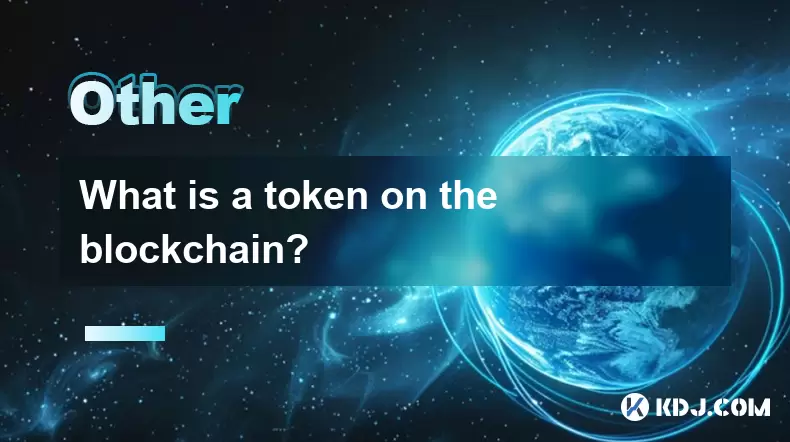
What is a token on the blockchain?
Jul 21,2025 at 07:00am
Understanding the Concept of a TokenIn the realm of blockchain technology, a token is a digital representation of an asset or utility that exists on a...
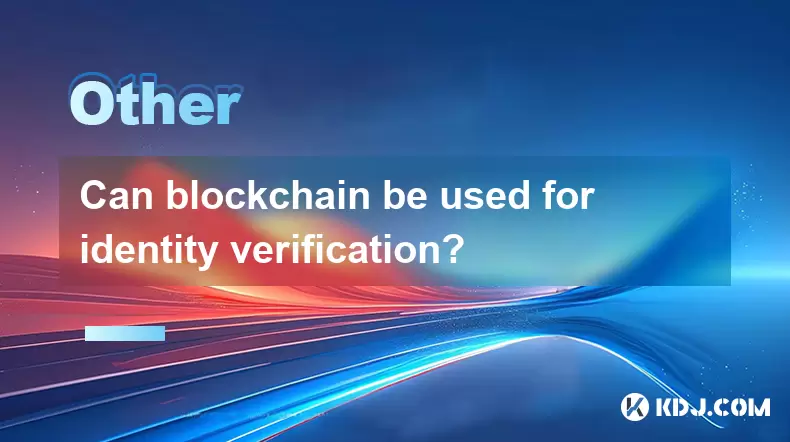
Can blockchain be used for identity verification?
Jul 18,2025 at 02:14pm
Understanding Identity Verification in the Digital AgeIn the modern digital landscape, identity verification has become a critical component for ensur...
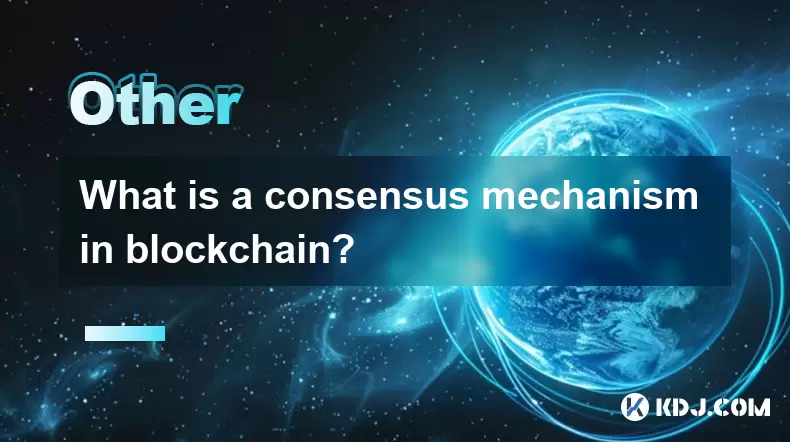
What is a consensus mechanism in blockchain?
Jul 21,2025 at 03:01am
Understanding the Basics of Consensus MechanismsA consensus mechanism is a critical component of any blockchain network. It refers to the process by w...
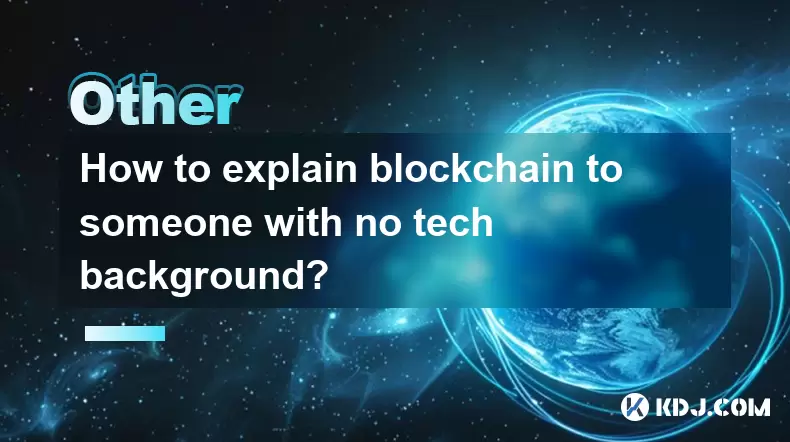
How to explain blockchain to someone with no tech background?
Jul 18,2025 at 11:08pm
Understanding the Basics of BlockchainTo explain blockchain to someone with no tech background, it's essential to start with simple analogies and avoi...
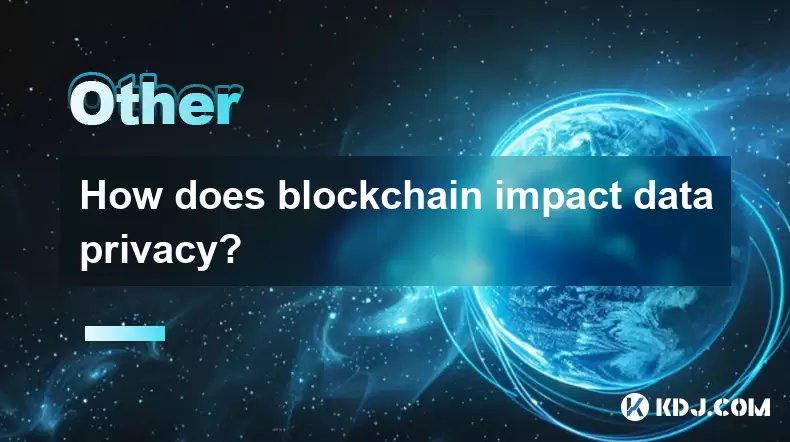
How does blockchain impact data privacy?
Jul 21,2025 at 02:21pm
Understanding the Role of Blockchain in Data PrivacyBlockchain technology, originally developed as the underlying infrastructure for cryptocurrencies ...
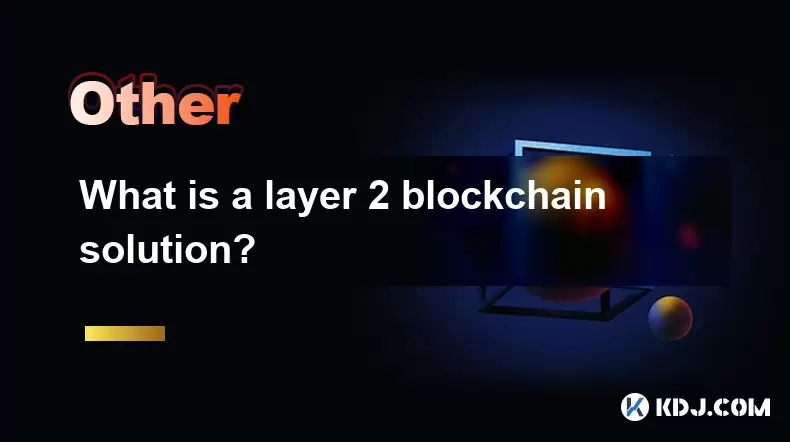
What is a layer 2 blockchain solution?
Jul 20,2025 at 01:42am
Understanding the Concept of Layer 2 BlockchainA layer 2 blockchain solution refers to a secondary framework or protocol built on top of an existing b...

What is a token on the blockchain?
Jul 21,2025 at 07:00am
Understanding the Concept of a TokenIn the realm of blockchain technology, a token is a digital representation of an asset or utility that exists on a...

Can blockchain be used for identity verification?
Jul 18,2025 at 02:14pm
Understanding Identity Verification in the Digital AgeIn the modern digital landscape, identity verification has become a critical component for ensur...

What is a consensus mechanism in blockchain?
Jul 21,2025 at 03:01am
Understanding the Basics of Consensus MechanismsA consensus mechanism is a critical component of any blockchain network. It refers to the process by w...

How to explain blockchain to someone with no tech background?
Jul 18,2025 at 11:08pm
Understanding the Basics of BlockchainTo explain blockchain to someone with no tech background, it's essential to start with simple analogies and avoi...

How does blockchain impact data privacy?
Jul 21,2025 at 02:21pm
Understanding the Role of Blockchain in Data PrivacyBlockchain technology, originally developed as the underlying infrastructure for cryptocurrencies ...

What is a layer 2 blockchain solution?
Jul 20,2025 at 01:42am
Understanding the Concept of Layer 2 BlockchainA layer 2 blockchain solution refers to a secondary framework or protocol built on top of an existing b...
See all articles

























